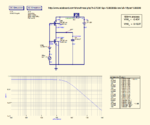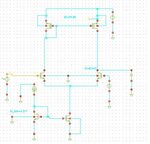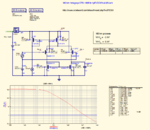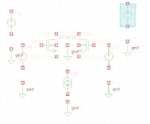With such an extremely simple circuit (and my models)
 ... i got 35dB gain and a UGB≈200MHz - if you don't mind the high current of 1.7mA .
... i got 35dB gain and a UGB≈200MHz - if you don't mind the high current of 1.7mA .
Note: such a circuit is just good for simulation, it's not appropriate for real analog amp design (uncontrolled drain current, high sensitivity on Vth and W/L ratio values, and PVT changes).
For higher gain and lower power consumption better use the differential amplifier version (OTA), s. my example above.
 ... i got 35dB gain and a UGB≈200MHz - if you don't mind the high current of 1.7mA .
... i got 35dB gain and a UGB≈200MHz - if you don't mind the high current of 1.7mA .Note: such a circuit is just good for simulation, it's not appropriate for real analog amp design (uncontrolled drain current, high sensitivity on Vth and W/L ratio values, and PVT changes).
For higher gain and lower power consumption better use the differential amplifier version (OTA), s. my example above.





